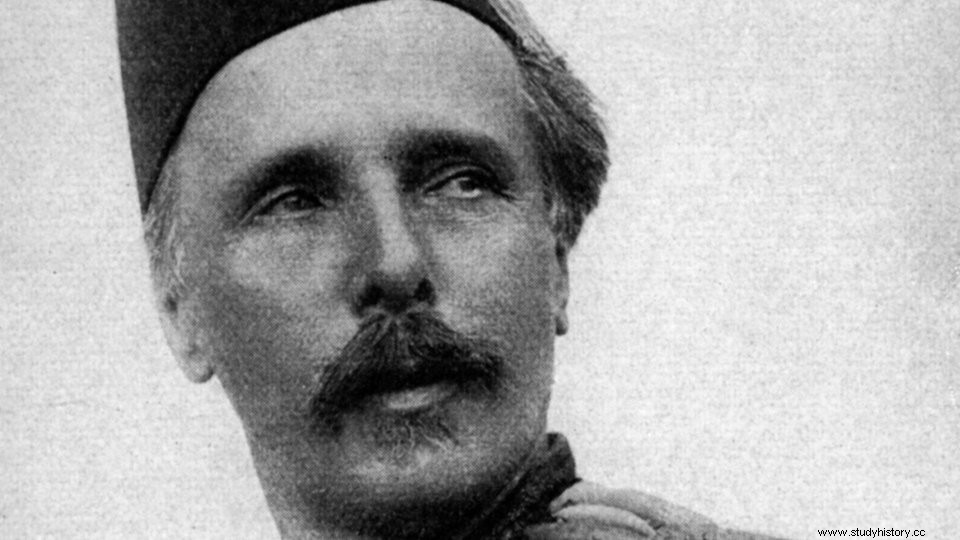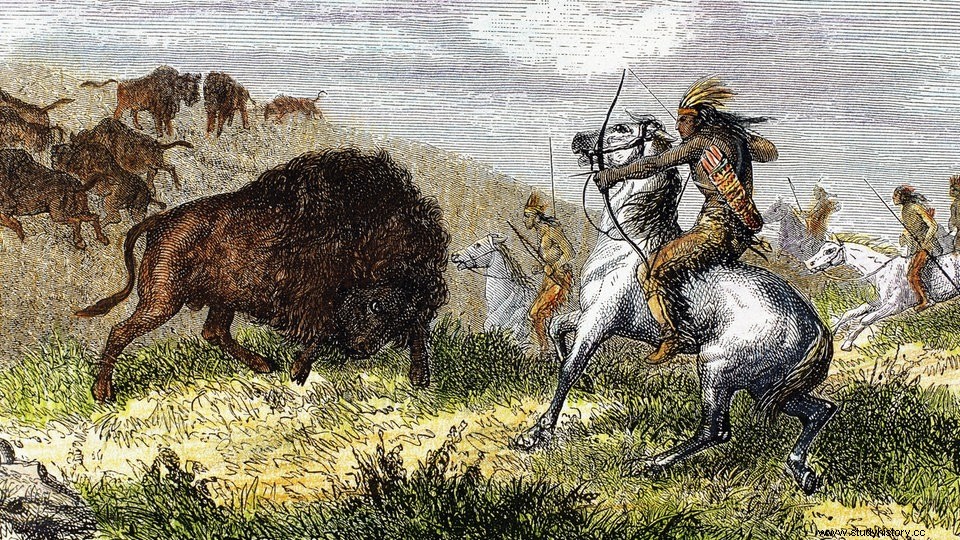Karl May is one of the most widely read authors of the 20th century. His fantastic travel novels are set in the Middle East and the Wild West. He has never seen many of these scenes himself.
A childhood full of deprivation
Karl May was born on February 25, 1842 in Ernstthal. His parents are desperately poor weavers who can hardly provide for their children. Childhood at home is hard and strict. According to the educational style of the time, the children are often beaten and severely punished.
On his father's orders, Karl had to study day and night for school, and he even received special music and composition lessons. Despite his busy schedule, he began secretly reading adventure novels at the age of twelve.
Escape into fantasy helps him to cope better with his difficult life. The boundaries between reality and fantasy blur. A state that he will never let go of for the rest of his life.
An unsteady life
After finishing school, Karl May entered the Waldenburg teacher training college in 1859. When he steals six Christmas tree candles for his poor parents there, he is immediately expelled from the seminar.
Thanks to the help of his pastor, he is allowed to continue his education in Plauen. In 1860 he passed the teacher's examination with the grade "good" and got a job as an assistant teacher.
But when everything seems to be going according to plan, his life takes a dramatic turn. Because he kisses his landlord's wife during a piano lesson, Karl May is immediately dismissed from school.
He goes to work as a teacher in a factory. On Christmas Day, he accidentally takes a watch home that his roommate lent him. He reports him to the police, who search his home, find the watch and arrest him.
The court imposed the maximum penalty:six weeks in prison. May's professional career is ruined by this episode. As a criminal with a criminal record, he will be removed from the list of candidate teachers.
Mental crisis and prison
After his imprisonment, Karl May loses the ground under his feet. He suffers from mental disorders. He travels the country with a theater and commits petty thefts and frauds. When the police arrested him again in 1862, he was sentenced to four years in a workhouse.
Even after his early release, he continued his lifestyle. He constantly pretends to be someone else, lives between normality and insanity and keeps committing minor crimes. He was arrested again and in 1870 had to go to prison for four years for vagrancy.
There it is discovered that Karl May suffers from severe disorders of consciousness and identity. He has to go into solitary confinement.
In the end, his friendship with the Catholic prison chaplain Johannes Kochta saved him. Karl May finds his way to religion and plays the organ in the prison church.
This is the first time he has benefited from his musical training. In 1874 he was released from prison. From now on his life should change for the better.

Portrait of Karl May, around 1885
The first literary attempts
Shortly after his release, Karl May wrote his first story, "Die Rose von Ernstthal", which was published immediately. Shortly thereafter, a publisher offered him a job as an editor.
May obsessively writes one story after the other. His literary output seems inexhaustible. Gradually, in his imagination, he develops the characters who are later to become the heroes of his novels.
In 1875 his first Winnetou story appeared:"Old Firehand". In 1879 we meet the character "Old Shatterhand" for the first time, and in 1881 the first-person narrator "Kara Ben Nemsi" and his servant "Haji Halef Omar" appear for the first time.
The first stories are already appearing in France. His private life is also slowly becoming more stable. In 1879 he married his first wife, Emma Pollmer.

Karl May's stories are set in North America
The successful writer
In the 1880s, Karl May was already making a good living from his books and stories. He gets good contracts from publishers and magazines and can now even afford a villa with a maid. And he continues to work almost obsessively on new works. In 1889 alone he wrote 3770 manuscript pages.
After concentrating on the Orient for a few years, he turned his attention back to the Wild West from 1890 onwards. He identifies himself most with the character of Old Shatterhand, in which he deals with his own sad childhood and through which he lives out many of his unfulfilled dreams.
In 1895 he bought a large house in Radebeul, which he called "Villa Shatterhand". In this phase of his life, too, reality and fantasy mingle. Karl May has guns made to document the authenticity of his travels.
He has photos taken of himself in Old Shatterhand's costume. The first Karl May clubs are formed, visiting their beloved writer in his villa. In the breaks between his work, he slips into the role of his heroes.

Karl May as "Old Shatterhand"
The difficult years of old age
The years of old are very changeable for Karl May. At least he can now afford the trips he didn't have the money or time for before. In 1898 he embarked on his first journey to the Orient, which took him to Indonesia.
In 1899 he got to know Italy and Turkey and in 1908 he visited the USA for the first and only time. However, May only travels the East Coast:New York, Niagara Falls, Albany, Buffalo, Boston. He will never see the beloved Wild West.
Occasionally he still publishes new stories, but around the turn of the century the press began to attack him and his books violently. His opponents accuse him of immorality, religious hypocrisy, self-promotion and even his criminal record.
These hostilities are to accompany him until his death and again lead to mental disorders and all kinds of illnesses. His heyday as a writer is slowly coming to an end.
In his late literary work, May attempts to discuss philosophical questions. He turns to pacifism and becomes friends with the well-known peace activist Bertha von Suttner.
However, his new books are not selling well. On March 30, 1912, Karl May dies at the age of 70 in his "Villa Shatterhand", presumably as a result of pneumonia.

Karl May's library in the "Villa Shatterhand" in Radebeul
